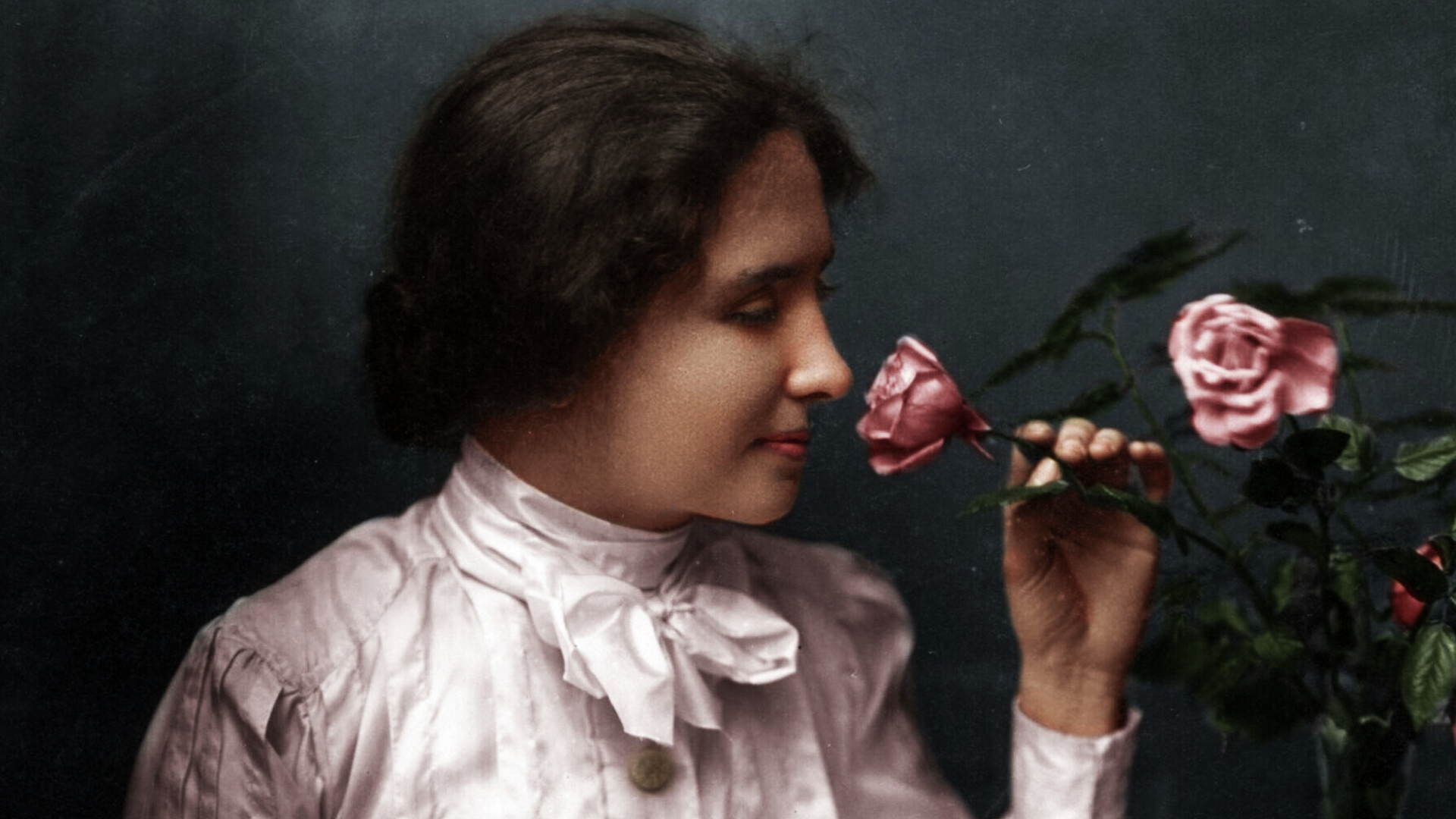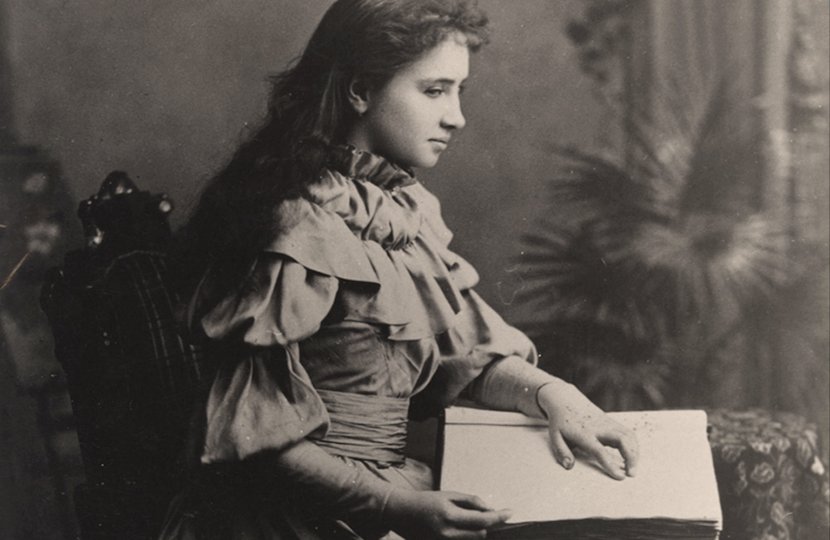Helen Keller

Illustrated portrait of Helen Keller reading Braille with one hand while holding a book in the other, surrounded by symbols of education and justice.
Biography
Helen Keller was born on June 27, 1880, in Tuscumbia, Alabama. At just 19 months old, she contracted a severe illness—possibly scarlet fever or meningitis—that left her completely deaf and blind. For years, she lived in silence, frustration, and confusion, developing her own signs to communicate basic needs. Everything changed in 1887, when a young teacher named Anne Sullivan arrived at her home with a radical idea: to teach her language through touch. After weeks of struggle, a breakthrough came at the water pump—Anne spelled "w-a-t-e-r" into Helen’s palm as water poured over her hand. Helen understood, and her world cracked open.
From that moment, Helen was unstoppable. She learned to read Braille, use a typewriter, and even speak. She devoured books and ideas. By the age of 14, she was studying in New York and then enrolled in Radcliffe College, where she graduated cum laude in 1904—becoming the first deaf-blind person to earn a bachelor’s degree. Throughout her education, Anne Sullivan was right by her side, interpreting lectures, spelling notes into Helen’s hand, and empowering her to rise far beyond what anyone thought possible.
But Helen Keller wasn’t content just to break barriers for herself—she dedicated her life to dismantling barriers for others. She became a passionate public speaker, authoring 14 books and countless articles. She advocated fiercely for the blind and deaf-blind, speaking before legislatures and raising global awareness about accessibility, education, and employment. But she didn’t stop there. Keller became a suffragist, a pacifist, a socialist, and a founding member of the American Civil Liberties Union. Her politics were bold: she criticized U.S. imperialism, called out economic inequality, and demanded justice for workers, women, and people with disabilities.
Despite the challenges of her disabilities—and the political blowback from her more radical views—Helen Keller became one of the most admired women of the 20th century. She traveled to 39 countries, meeting presidents, world leaders, and ordinary citizens. She visited wounded soldiers, lectured in multiple languages, and became a living symbol of resilience and courage. She received dozens of honorary degrees, the Presidential Medal of Freedom, and the French Legion of Honor.
Helen Keller died in 1968 at the age of 87. Her life wasn’t just a personal triumph—it was a global movement. Through her story, the world learned that disability is not inability. That communication is more than sound or sight. And that justice, compassion, and courage can light the darkest places.
Helen Keller showed the world that disability is not the end of a story—it’s the beginning of a revolution. At a time when people with disabilities were pushed to the margins, she stood at the center of change. She redefined what it means to communicate, to learn, and to lead. Keller’s advocacy helped dismantle barriers, not only in education and employment, but in people’s minds. Her legacy pushes us to build a world where accessibility, equity, and dignity aren’t extras—they’re expectations. She taught us that with support, vision, and resistance, no one is voiceless—and no injustice is untouchable.
?
How did Anne Sullivan’s approach to teaching Helen challenge educational norms?
Why was Keller’s political activism often ignored in public celebrations of her life?
In what ways do we still see systemic barriers for people with disabilities today?
How might Keller’s life story be different if she were born in the 21st century?
What can schools and communities do today to build on her legacy of inclusion and justice?
Dig Deeper
A powerful short documentary on Keller’s early education and communication breakthroughs.
This deep dive from TIME explores Keller’s political activism and legacy beyond her personal achievements.
Discover more

Louisa May Alcott
A feminist, abolitionist, and fierce advocate for women's rights, Louisa May Alcott turned her personal struggles into public triumphs, creating characters that dared to live, speak, and choose freely.

Harriet Tubman
Harriet Tubman escaped slavery and then risked her life at least 13 more times to guide about 70 people to freedom on the Underground Railroad—earning the nickname "Moses".

Sojourner Truth
Sojourner Truth was a formerly enslaved woman who became one of the most powerful voices in American history for abolition, women’s rights, and racial justice.
Further Reading
Stay curious!
